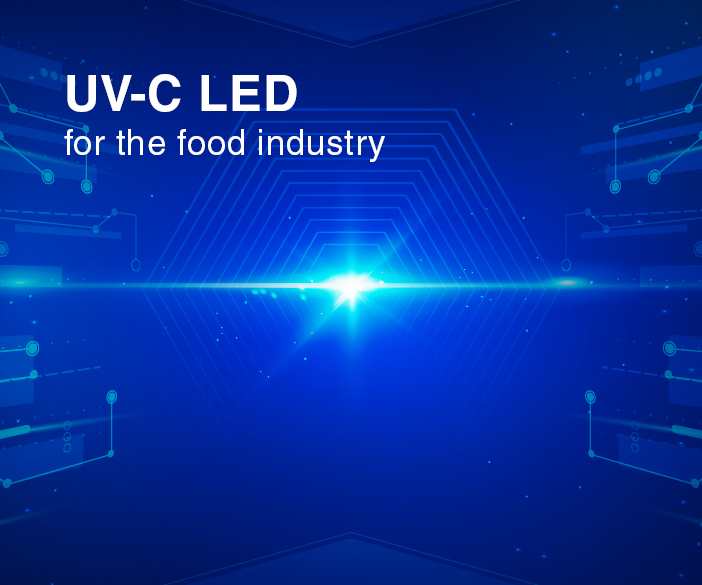
UV-C LEDs for the food industry
Introduction: the UV-C LEDs
UV and UV-C LED technologies, exploiting UV-C radiation, damage the DNA of bacteria and viruses with such power as to kill them or render them inactive in a limited area. These technologies have acquired a fair amount of commercial relevance, in particular following the impact of the pandemic.
The Covid-19 emergency has in fact underlined the need to amplify the sanitation processes in any industrial, commercial, private environment where the transmission of pathogens particularly harmful to humans can occur.
The use of innovative technologies has always been – but now more than in the past – an important support resource for the purpose of water, air and surfaces sterilization.
Let’s find out in this article how these special lighting fixtures work and why they are essential in the context of food packaging.
UV-C LEDs: lamps, devices and why to apply
UV-C technologies make use of the so-called germicidal ultraviolet radiation (UVGI – Ultraviolet Germicidal Irradiation). It is a sterilization methodology, a full-fledged disinfectant agent that uses ultraviolet (UV) light with wavelengths that can be classified within the UV-C band that is between 280 and 100 nanometers.
These UV-C rays are an ideal measure as they guarantee a sterilizing power capable of rapidly eliminating harmful microorganisms thanks to their germicidal irradiation.
The study of UV-C radiation and its “killer properties” has led to the design of special lamps and devices that can be adapted to different application contexts. Among the most sought-after solutions are the germicidal UV-C LED lamp in reel and the UV-C LED light strip, which, compared to the “traditional” lamp, does not require the prior design of a PCB to support the assembly.
UV-C LEDs: a faithful ally for the food industry
UV-C LEDs are particularly suitable solutions for all food distribution hubs that need to sterilize their surfaces without running the risk of damaging the products.
It is in fact known that food is a category of products particularly exposed to potential damage and/or episodes of chemical contamination. The product must reach the consumer in optimal conditions, and above all it must comply with high sanitary standards to be obtained through careful hygiene control.
In the food context, a contamination control procedure must therefore follow every stage of production, including packaging and storage, and therefore requires a solution capable of adapting to changes and ensuring continuous action.
Unlike many other sterilization techniques, UV-C LEDs do not release chemical agents capable of changing the composition of the product, altering its flavor, color and nutritional properties, or other types of residues that can contaminate it. Furthermore, the energy consumption in most cases is limited, as the characteristics of the solution allow to avoid maintenance checks on an ordinary basis and further countermeasures typical of other sanitation systems such as, for example, the need to ventilate the work area after exposure to disinfectant action.
Welt Electronic distributes a wide range of UV-C LED modules suitable for different applications. Thanks to its experience and support, Welt is able to support you in the process of finding the product that best suits your needs. Consult the guide we have published to help companies to learn more about UV-C LED technology and select the best solution available: https://www.weltelectronic.it/purificazione-e-sterilizzazione-degli-ambienti/.

